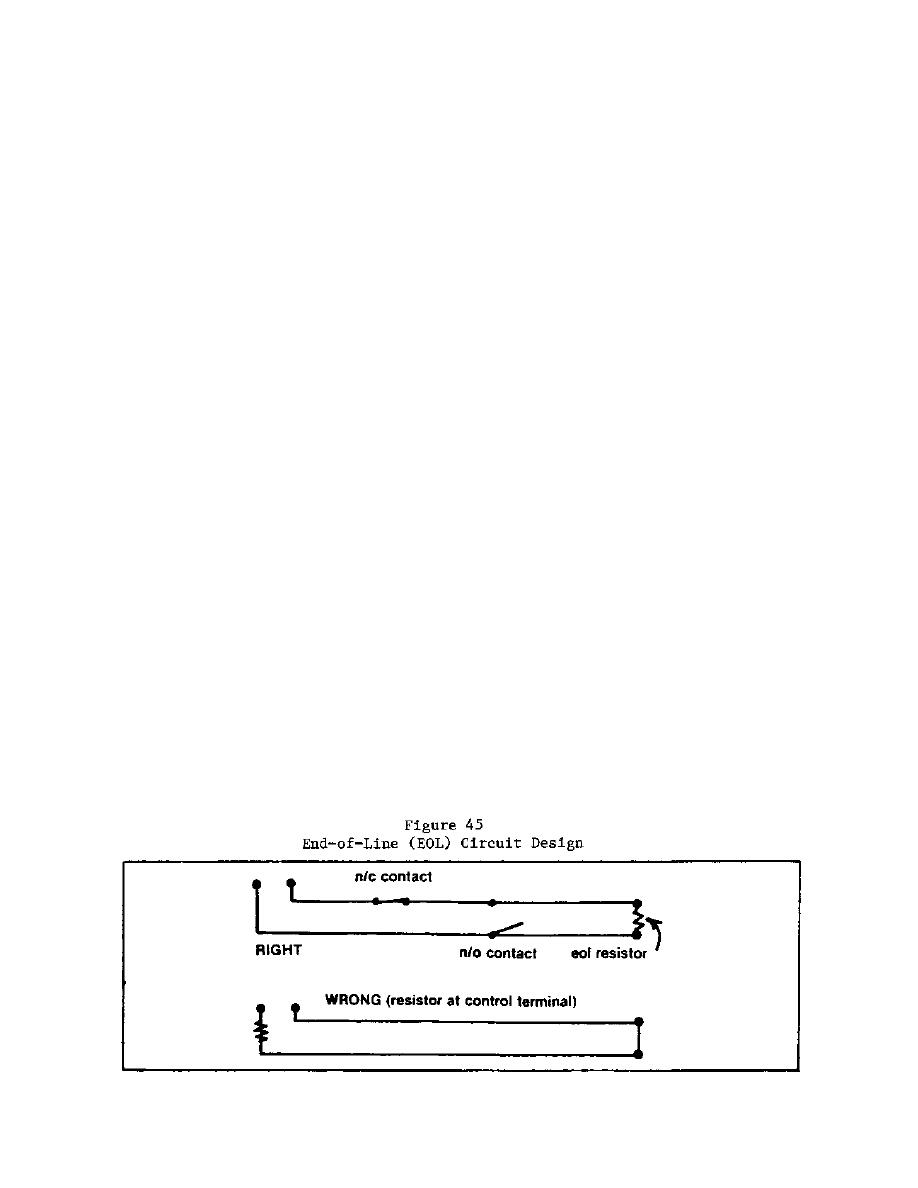

Custom Search
|
|

|
||
 should be exercised when the communication line is adjacent to or crossing
all other electrical, electromechanical, and electronic system networks.
Degradation of signal, except for fiber optics, is possible from any static
or electrical "noise." Figure 43 and Table 15 depict the relationship of
the resistance of hardwire cable lengths versus size (thickness) for
assessment communications applications.
7.4 Line Security Techniques. The importance of the Alarm Communications
Network requires protection of this information from compromise. Planned or
spurious violations of the complex wire lines require both specific
annunciation and physical safeguards to ensure the accuracy of this
extremely vulnerable network. The following paragraphs provide the criteria
and concerns for amelioration of this vulnerability. Avoid systems which
permit alarms to be shunted or ignored when using the access mode. It is
better to have masking techniques that permit trouble or supervision alarms
even when the system is in an unarmed state.
7.4.1 Line Supervision. Line supervision is the term used to describe the
various techniques that are designed to detect or inhibit manipulations of
communication networks. Detection of line compromise can be accomplished in
a direct current circuit for open, short, ground, or foreign voltage by
using a circuit resistance system as noted in Figures 45 through 49. Line
supervision techniques are required for the protection of information
pathways. Either active or passive methods are employed to detect the
compromise attempts. Examples of detection methods include: use of
modulated frequencies for information transfer, pulses and encryption
techniques, polling schemes, and lack of information presence.
7.4.2 Physical Protection of System Components. Physical protection
techniques are used to protect wiring exposed to physical damage and
manipulation or tampering. The general method of accomplishing this
protection is providing conduit or metallic tubing to accommodate wiring.
This serves to protect wiring from: physical manipulation by unauthorized
persons, chewing damage by rodents and, to a lesser degree, some fire
protection and improvement of shielding characteristics. Tamper detection
sensors are required on all junction boxes. The conduit connections should
be tight, workmanlike, and free from mechanical defects. Exterior conduit
should
|
 |
|
 |
||